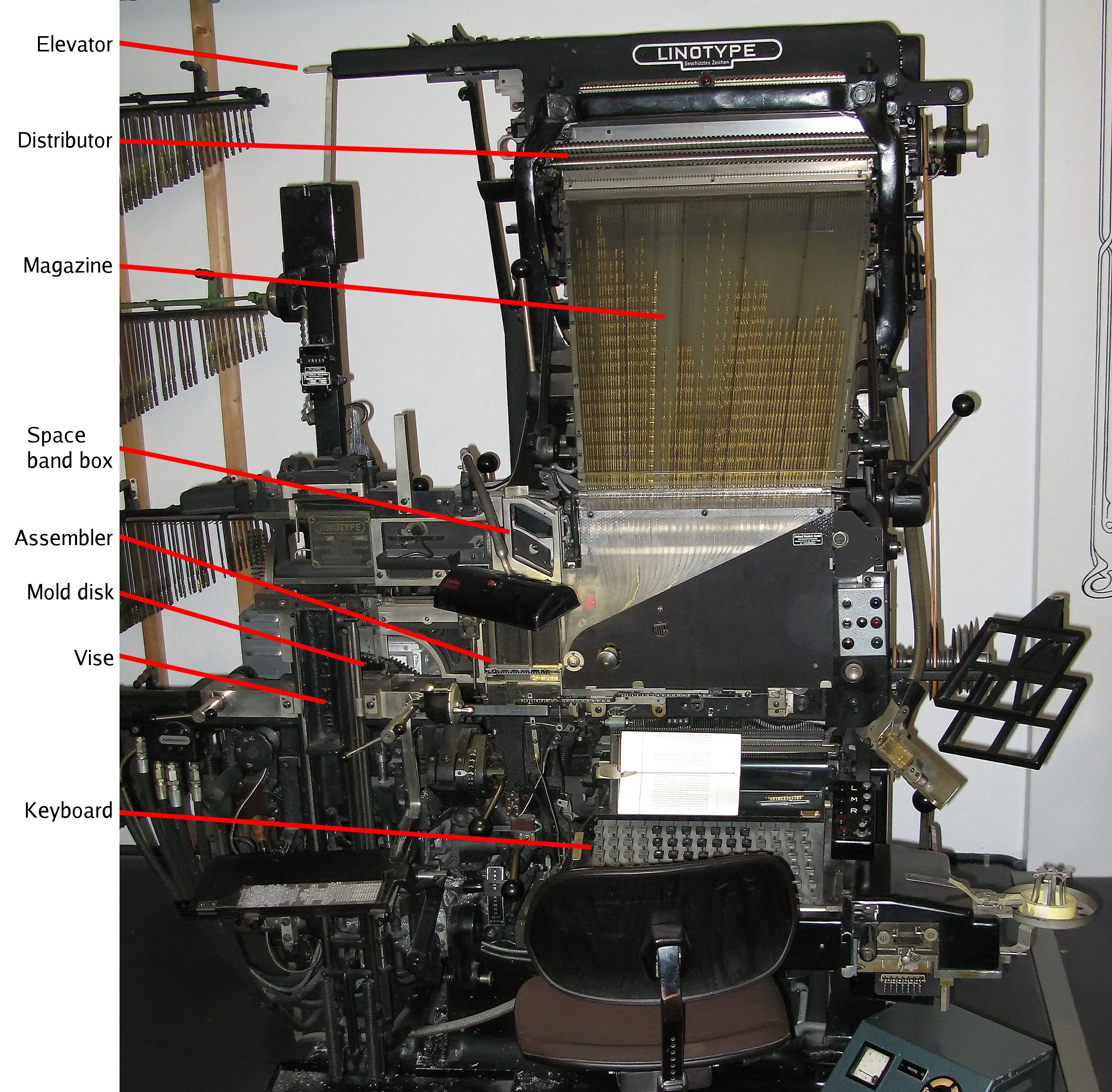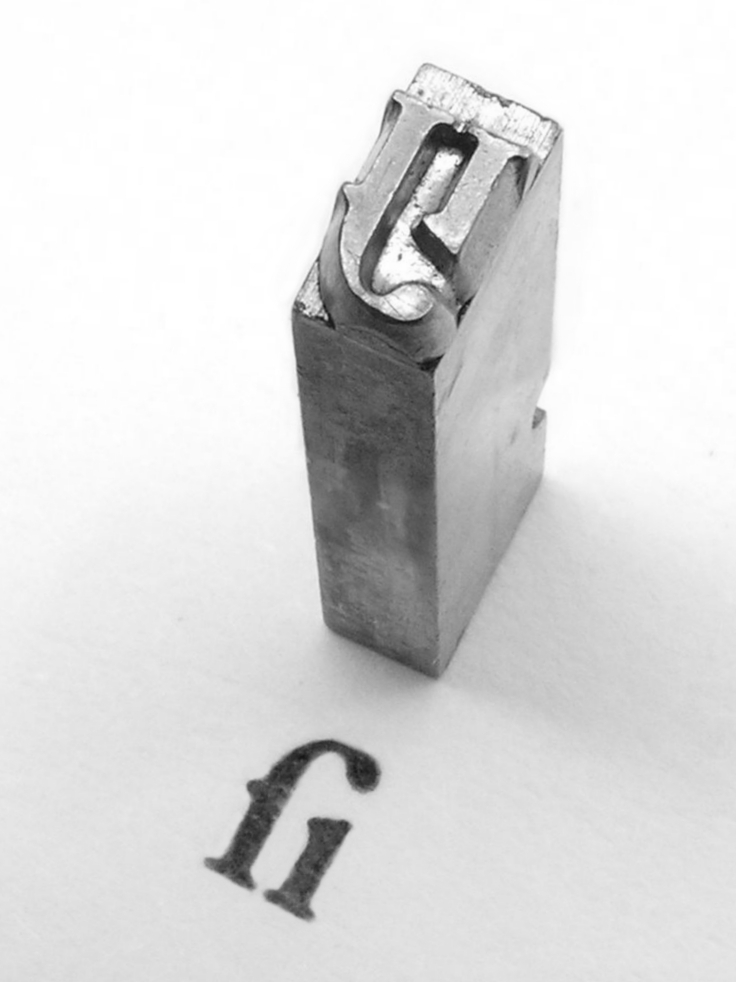|
Typesetting
Typesetting is the composition of text by means of arranging physical ''type'' (or ''sort'') in mechanical systems or '' glyphs'' in digital systems representing '' characters'' (letters and other symbols).Dictionary.com Unabridged. Random House, Inc. 23 December 2009Dictionary.reference.com/ref> Stored types are retrieved and ordered according to a language's orthography for visual display. Typesetting requires one or more fonts (which are widely but erroneously confused with and substituted for typefaces). One significant effect of typesetting was that authorship of works could be spotted more easily, making it difficult for copiers who have not gained permission. Pre-digital era Manual typesetting During much of the letterpress era, movable type was composed by hand for each page by workers called compositors. A tray with many dividers, called a case, contained cast metal '' sorts'', each with a single letter or symbol, but backwards (so they would print correctly) ... [...More Info...] [...Related Items...] OR: [Wikipedia] [Google] [Baidu] |
Phototypesetting
Phototypesetting is a method of setting type. It uses photography to make columns of type on a scroll of photographic paper. It has been made obsolete by the popularity of the personal computer and desktop publishing ( digital typesetting). The first phototypesetters quickly project light through a film negative of an individual character in a font, then through a lens that magnifies or reduces the size of the character onto photographic paper or film, which is collected on a spool in a light-proof canister. The paper or film is then fed into a processor, a machine that pulls the paper or film strip through two or three baths of chemicals, from which it emerges ready for paste-up or film make-up. Later phototypesetting machines used other methods, such as displaying a digitised character on a CRT screen. Phototypesetting offered numerous advantages over metal type, including the lack of need to keep heavy metal type and matrices in stock, the ability to use a much wider ran ... [...More Info...] [...Related Items...] OR: [Wikipedia] [Google] [Baidu] |
Linotype Machine
The Linotype machine ( ) is a "line casting" machine used in printing; manufactured and sold by the former Mergenthaler Linotype Company and related It was a hot metal typesetting system that cast lines of metal type for individual uses. Linotype became one of the mainstay methods to set type, especially small-size body text, for newspapers, magazines, and posters from the late 19th century to the 1970s and 1980s, when it was largely replaced by phototypesetting and digital typesetting. The name of the machine comes from the fact that it produces an entire line of metal type at once, hence a ''line-o'-type''. It was a significant improvement over the previous industry standard of manual, letter-by-letter typesetting using a composing stick and shallow subdivided trays, called "cases". The Linotype machine operator enters text on a 90-character keyboard. The machine assembles ''matrices'', which are molds for the letter forms, in a line. The assembled line is then ca ... [...More Info...] [...Related Items...] OR: [Wikipedia] [Google] [Baidu] |
Font
In movable type, metal typesetting, a font is a particular #Characteristics, size, weight and style of a typeface. Each font is a matched set of type, with a piece (a "Sort (typesetting), sort") for each glyph. A typeface consists of a range of such fonts that shared an overall design. In modern usage, with the advent of computer fonts, the term "font" has come to be used as a synonym for "typeface", although a typical typeface (or "font family") consists of a number of fonts. For instance, the typeface "Bauer Bodoni" (sample shown here) includes fonts "Roman (typeface), Roman" (or "Regular"), "Emphasis (typography), Bold" and ''"Italic type, Italic"''; each of these exists in a variety of sizes. The term "font" is correctly applied to any one of these alone but may be seen used loosely to refer to the whole typeface. When used in computers, each style is in a separate digital "font file". In both traditional typesetting and modern usage, the word "font" refers to the delivery ... [...More Info...] [...Related Items...] OR: [Wikipedia] [Google] [Baidu] |
Typeface
A typeface (or font family) is the design of lettering that can include variations in size, weight (e.g. bold), slope (e.g. italic), width (e.g. condensed), and so on. Each of these variations of the typeface is a font. There are thousands of different typefaces in existence, with new ones being developed constantly. The art and craft of designing typefaces is called '' type design''. Designers of typefaces are called '' type designers'' and are often employed by '' type foundries''. In desktop publishing, type designers are sometimes also called ''font developers'' or ''font designers''. Every typeface is a collection of glyphs, each of which represents an individual letter, number, punctuation mark, or other symbol. The same glyph may be used for characters from different scripts, e.g. Roman uppercase A looks the same as Cyrillic uppercase А and Greek uppercase alpha. There are typefaces tailored for special applications, such as cartography, astrology or mathematics ... [...More Info...] [...Related Items...] OR: [Wikipedia] [Google] [Baidu] |
Letterpress
Letterpress printing is a technique of relief printing. Using a printing press, the process allows many copies to be produced by repeated direct impression of an inked, raised surface against sheets or a continuous roll of paper. A worker composes and locks movable type Movable type (US English; moveable type in British English) is the system and technology of printing and typography that uses movable components to reproduce the elements of a document (usually individual alphanumeric characters or punctuatio ... into the "bed" or "chase" of a press, inks it, and presses paper against it to transfer the ink from the type, which creates an impression on the paper. In practice, letterpress also includes other forms of relief printing with printing presses, such as wood engravings, photo-etched zinc "cuts" (plates), and linoleum blocks, which can be used alongside metal type, or wood type in a single operation, as well as stereotypes and electrotypes of type and block ... [...More Info...] [...Related Items...] OR: [Wikipedia] [Google] [Baidu] |
Typewriter
A typewriter is a mechanical or electromechanical machine for typing characters. Typically, a typewriter has an array of keys, and each one causes a different single character to be produced on paper by striking an inked ribbon selectively against the paper with a type element. At the end of the nineteenth century, the term 'typewriter' was also applied to a ''person'' who used such a device. The first commercial typewriters were introduced in 1874, but did not become common in offices until after the mid-1880s. The typewriter quickly became an indispensable tool for practically all writing other than personal handwritten correspondence. It was widely used by professional writers, in offices, business correspondence in private homes, and by students preparing written assignments. Typewriters were a standard fixture in most offices up to the 1980s. Thereafter, they began to be largely supplanted by personal computers running word processing software. Nevertheless, type ... [...More Info...] [...Related Items...] OR: [Wikipedia] [Google] [Baidu] |
Type Metal
In printing, type metal refers to the metal alloys used in traditional typefounding and hot metal typesetting. Historically, type metal was an alloy of lead, tin and antimony in different proportions depending on the application, be it individual character mechanical casting for hand setting, mechanical line casting or individual character mechanical typesetting and stereo plate casting. The proportions used are in the range: lead 50‒86%, antimony 11‒30% and tin 3‒20%. Antimony and tin are added to lead for durability while reducing the difference between the coefficients of expansion of the matrix and the alloy. Apart from durability, the general requirements for type-metal are that it should produce a true and sharp cast, and retain correct dimensions and form after cooling down. It should also be easy to cast, at reasonable low melting temperature, iron should not dissolve in the molten metal, and mould and nozzles should stay clean and easy to maintain. Today, Monoty ... [...More Info...] [...Related Items...] OR: [Wikipedia] [Google] [Baidu] |
Sort (typesetting)
In typesetting, a sort or type is a block with a typographic character etched on it, which is lined up with others to print text. In movable-type printing, the sort or type is cast from a matrix mold and assembled by hand with other sorts bearing additional characters into lines of type to make up a ''form'', from which a page is printed. Background From the invention of movable type up to the invention of hot metal typesetting essentially all printed text was created by selecting sorts from a type case and assembling them line by line into a form used to print a page. When the form was no longer needed all of the type had to be sorted back into the correct slots in the type case in a very time-consuming process called "distributing". This sorting process led to the individual pieces being called sorts. It is often claimed to be the root of expressions such as "out of sorts" and "wrong sort", although this connection is disputed. During the hot metal typesetting era, print ... [...More Info...] [...Related Items...] OR: [Wikipedia] [Google] [Baidu] |
Metal Movable Type
Movable type (US English; moveable type in British English) is the system and technology of printing and typography that uses movable components to reproduce the elements of a document (usually individual alphanumeric characters or punctuation marks) usually on the medium of paper. The world's first movable type printing technology for paper books was made of porcelain materials and was invented around AD 1040 in China during the Northern Song dynasty by the inventor Bi Sheng (990–1051). The earliest printed paper money with movable metal type to print the identifying code of the money was made in 1161 during the Song dynasty. In 1193, a book in the Song dynasty documented how to use the copper movable type. The oldest extant book printed with movable metal type, Jikji, was printed in Korea in 1377 during the Goryeo dynasty. The spread of both movable-type systems was, to some degree, limited to primarily East Asia. The development of the printing press in Europe may h ... [...More Info...] [...Related Items...] OR: [Wikipedia] [Google] [Baidu] |
.jpg)




